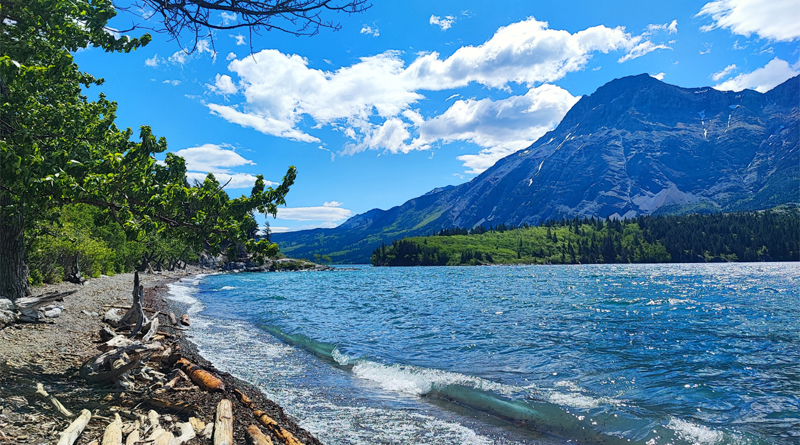WATERTON LAKES NATIONAL PARK, ALBERTA, CANADA
Waterton Lakes National Park sits in the southwest corner of Alberta, Canada, very close to the US border. It’s not as famous as it slightly more north-westerly counterparts of Banff, Lake Louise and Jaspar, but that doesn’t mean it should be ignored. Far from it, and now is the time to visit – before everyone realises what a gem this park is.
We visited on a Monday in early June. The weather was bright and sunny, if a little chilly and blowy. There were plenty of people enjoying the park, but it wasn’t crowded (in the way parks like Banff and Lake Louise regularly are). However, I am told it can get very busy at weekends.
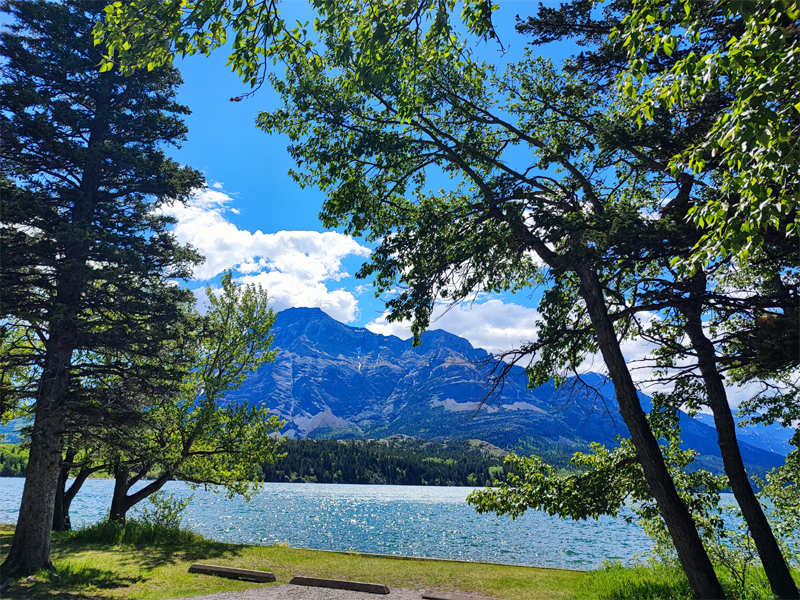
Waterton Lakes is where the prairies meet the mountains, and it is part of the Crown of the Continent ecosystem – a place with unusually diverse physical, biological and cultural resources. The ecosystem is one of the narrowest places in the Rocky Mountain chain, and yet more than half of Alberta’s plant species are found in Waterton.
Covering just 505 square kilometres (195 square miles) – small in Canadian terms – Waterton is home to more than 60 species of mammals, 250 species of birds, 24 species of fish and 10 species of reptiles and amphibians.
It is also visually spectacular with the mountains rising out of blue lakes, their craggy peaks reaching to the clouds and reflecting back into the mirrored surfaces below.
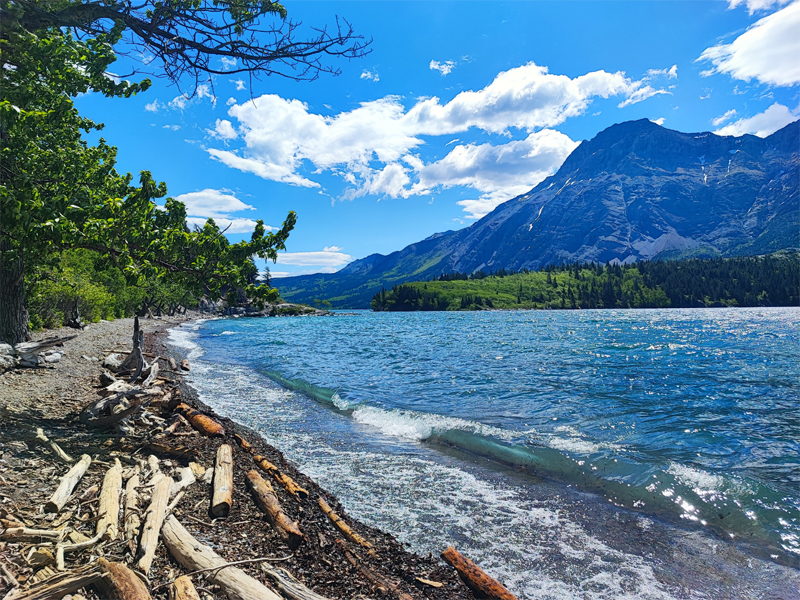
Whether you want to hike, spend a day on the lake, chill and watch the view, learn about the local history and culture, or simply enjoy a good meal, Waterton Lakes will not disappoint. The Visitor Centre is a good place to start; here you can pick up a map, get advice on activities that will suit your interests, and learn a bit more about what the park has to offer. It’s in the centre of town, so, if you are ready for a coffee before setting out, you’ll find one here.
We had just a few hours in the park, so we climbed the trail up to the impressive looking Prince of Wales hotel, which, confusingly follows a Scottish theme with tartan everywhere – even the staff are dressed in ‘kilts’ (but not the sort you’d ever see in Scotland!). The summit, where the hotel is perched, offers 360-degree views, so it’s worth the short climb from the lake below. However, if walking up isn’t your thing, then there is a paid-for car park right outside the hotel.
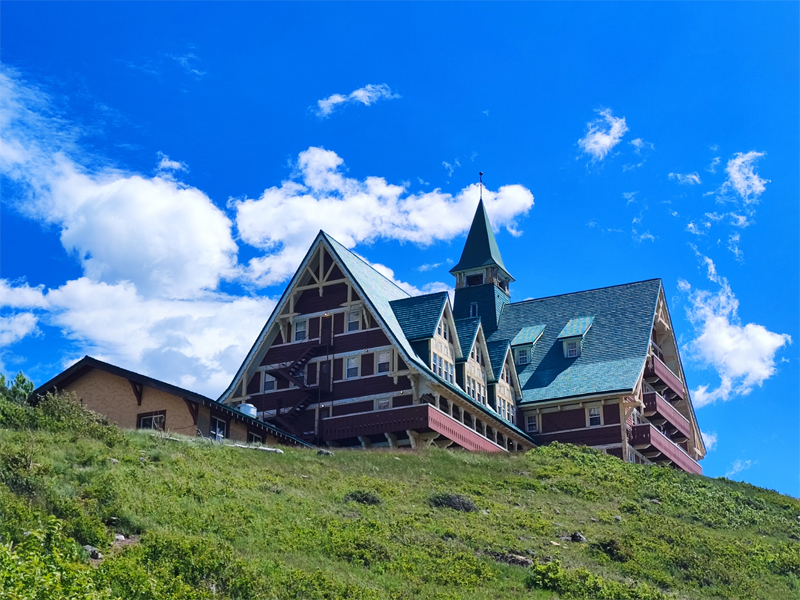
Wander back down again, enjoy the lake edge below and take some pictures – with views like that you don’t need camera skills to get a great shot. From there it is short drive or walk to the Bear’s Hump hike. This steep hike winds up Bear’s Hump, a rocky outcrop with few trees (due to the wildfire of 2017). The lack of mature trees provides the perfect excuse to stop at the numerous benches on the route up and take time to enjoy the view (while coincidently catching your breath). Once you reach the rounded rock summit, you are again afforded spectacular views in all directions. It’s the perfect spot for a photograph with a mountains and lake backdrop that will make it appear you are on top of the world. Tiny chipmunks scurry between the rocks, and hold onto your hat as it can be a little blowy up there.
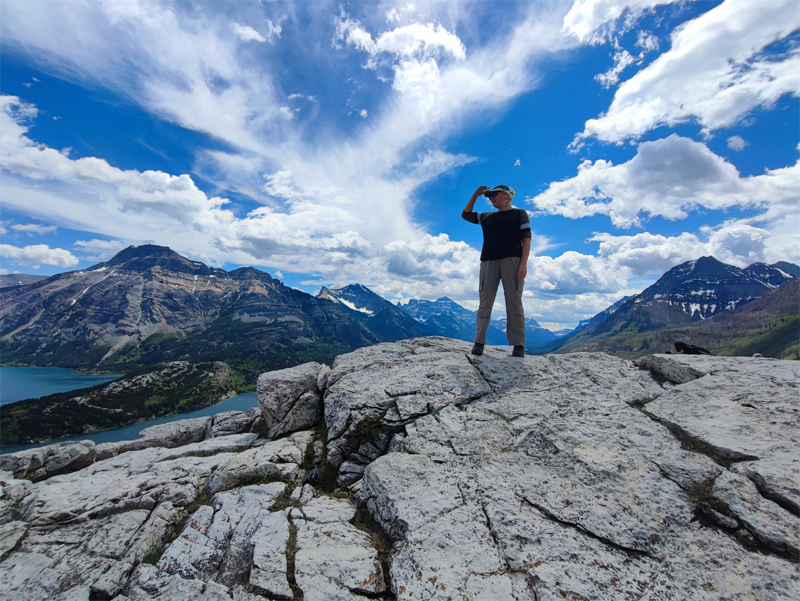
If a leisurely stroll is more your thing, then head for the shore of one of the lakes (there are three; Upper, Middle and Lower). The sound of the lapping water and chirping birds combined with the views will make you want to stop and gape. We took some time to sit on one of the benches, enjoy a snack, and let the beauty surround us. Waterton isn’t the sort of place that makes you want to hurry.
As the day was hot, we stopped by the waterfall to feel the spray on our faces and enjoy the sound of water crashing over the rocks into the pool below. There is also a trail next to the waterfall that will take you up to enjoy the view from above.
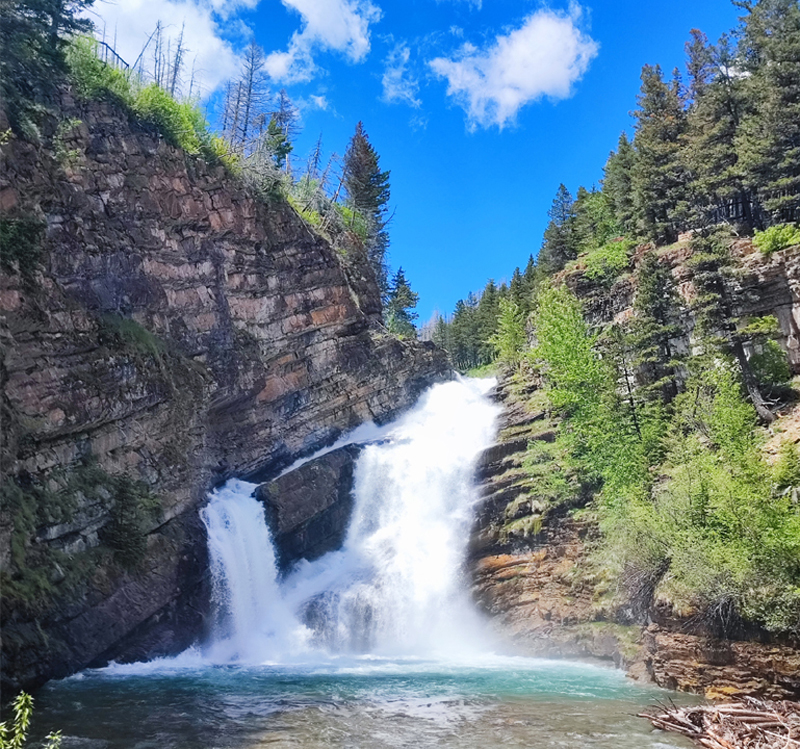
The park suffered a wildfire in 2017, and the regrowth is now really taking hold, providing an interesting insight into forest regeneration. Hiking is the best way to see this, and as the new growth is still quite low, you’ll enjoy clear views.
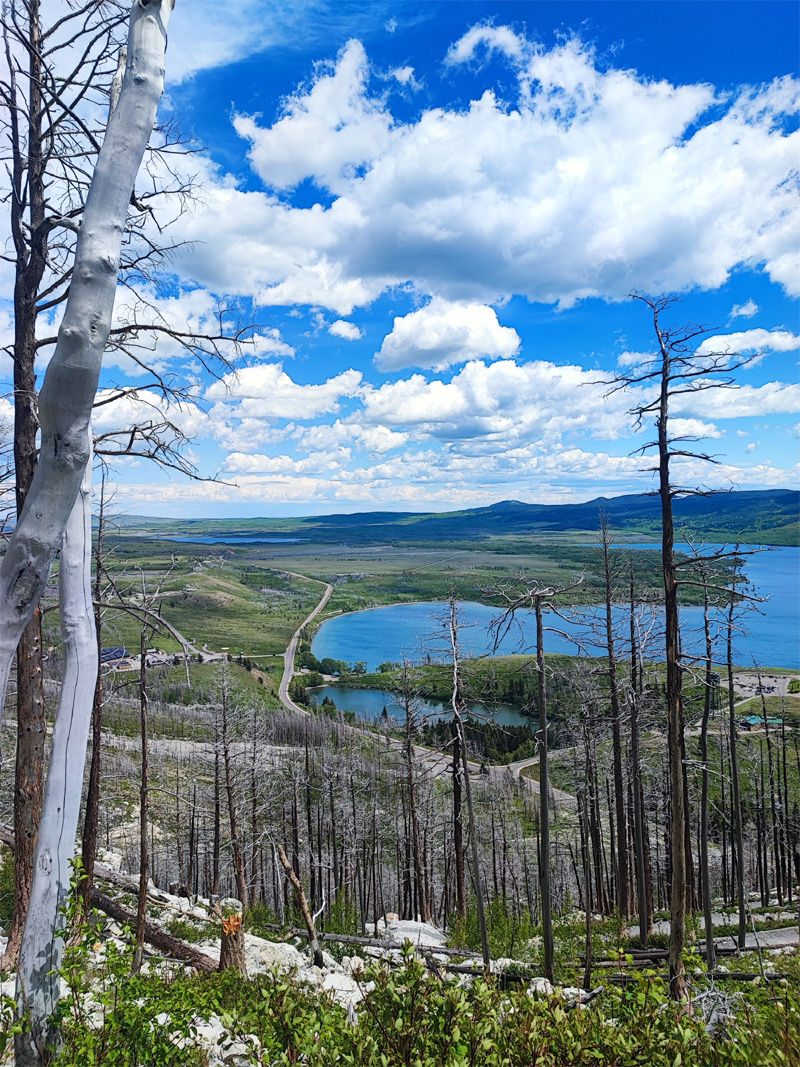
If you have a car, visit the bison paddock to see these majestic animals that are part of a conservation programme for plains bison. Or grab your binoculars and park the car at the Maskinonge day-use area for some bird watching and tranquillity. Alternatively, lace up your boots and step out on the Bellevue hike off Red Rock Parkway, which follows the prairies where they border the mountains. And, if you are lucky to be staying the night, stay up late and head out to see the stars. Waterton Lakes is an International Dark Sky Park, with minimal light pollution meaning you will see many more stars than you may be used to at home.
Waterton Lakes is the Canadian half of Waterton-Glacier International Peace Park (with Montana’s Glacier National Park). It was created in 1932 as a symbol of goodwill between the two nations. This means the park can be accessed from the Canadian or American side. It’s about three hours from Calgary or Thanksgiving Ranch (see my blog about Thanksgiving Ranch)
This a stunning park and well worth a visit. If you have the time, give yourself a couple of days – there’s certainly plenty to see. And once you’ve enjoyed Waterton be sure to experience more of Alberta, which has some of Canada’s most dramatic scenery.
FACTBOX
Waterton Lakes National Park – parks.canada.ca/pn-np/ab/Waterton
Thanksgiving Ranch – thanksgivingranch.ca
Travel Alberta – travelalberta.com
ABOUT THE AUTHOR
Chantal Cooke is an award-winning journalist and broadcaster and co-founder of PASSION for the PLANET.
Chantal is passionate about tourism being used as a force for good.
You can follow her adventures on Facebook (@chantal.cooke) and on Instagram (@Chantaldcooke)

